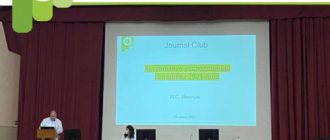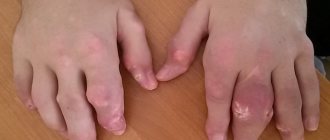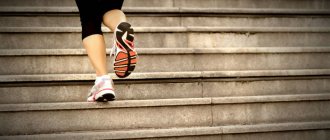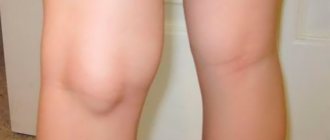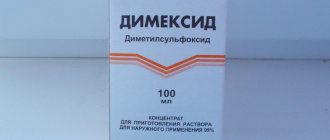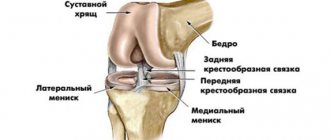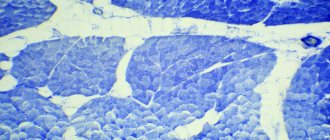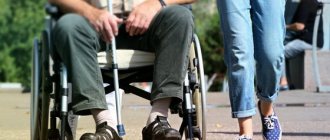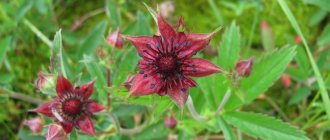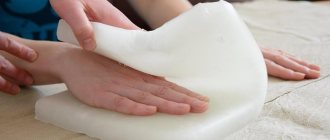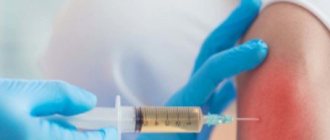INSTRUCTIONS
on the use of the medicinal product for medical use Colchicum-Dispert®
Registration number:
P N014955/01
Trade name of the drug: Colchicum
International non-proprietary or generic name :
Chemical name: (S)-N-(5,6,7,9- tetrahydro
10-tetramethoxy-9-oxobenzo[α]heptalene-7-y1) acetamide
Dosage form: film-coated tablets
Description: dark
red round shiny tablets, film-coated.
Pharmacotherapeutic group drug
ATX code:
[M04AC01]
COMPOUND:
1 film-coated tablet contains: Active substance:
Colchicum autumnalis seed extract [eq.
500 mcg of colchicine] [composed of extract 57-64% lactose, 28-32% microcrystalline cellulose] 15.6 mg; Excipients:
Core: copovidone 5.33 mg, corn starch 27.5 mg, lactose monohydrate 41.6-43.9 mg, magnesium stearate 0.33 mg, palmitostearic acid 1.34 mg, talc 7.00 mg, cellulose microcrystalline 3.6-5.2 mg. Shell: acacia gum 0.3 mg, carnauba wax 0.140 mg, sodium carmellose 0.273 mg, magnesium oxide 2.6 mg, macrogol 6000 1.093 mg, opalux AS 250000 [sucrose - 0.7923 mg, Ponceau dye 4R (E124) - 0 ,26334 mg, quinoline yellow dye (E104) - 0.09652 mg, titanium dioxide (E171) 0.07904 mg, povidone 0.0133 mg] 1.2445 mg, povidone - K 25 2.186 mg, sucrose 86.1515 mg, talc 11, 975 mg, titanium dioxide (E171) 3.717 mg, shellac 0.32 mg.
PHARMACOLOGICAL PROPERTIES
- The antigout effect of colchicine is associated with a decrease in the migration of leukocytes to the site of inflammation and inhibition of phagocytosis of microcrystals of uric acid salts. It also has an antimitotic effect, suppresses (fully or partially) cell division at the stage of anaphase and metaphase, and prevents degranulation of neutrophils. By reducing the formation of amyloid fibrils, it prevents the development of amyloidosis.
- Highly effective for relieving acute gout. In the first 12 hours of therapy, the condition improves significantly in more than 75% of patients. In 80%, it may cause adverse reactions from the gastrointestinal tract before or simultaneously with clinical improvement.
- A daily dose of 1-2 mg when taken daily in 3/4 of patients with gout reduces the likelihood of developing repeated acute attacks.
- Prevents acute attacks in patients with familial Mediterranean fever (reduces the activity of dopamine beta-hydroxylase).
- Increases the life expectancy of patients with primary AL amyloidosis.
- Has a positive effect on the skin (softening, reducing dryness) with systemic scleroderma.
MECHANISM OF ACTION*
✔︎ suppression of activation of the NLRP3 inflammasome in response to MUN microcrystals; ✔︎ suppression of the expression of nuclear factor kappa B (NF-κB; nuclear factor kappa light chain enhancer of activated B cells) – a universal transcription factor that controls the expression of genes of the immune response, apoptosis and cell cycle; ✔︎ decrease in the density of tumor necrosis factor α (TNFα) receptors on the membrane of macrophages and endothelial cells (EC); ✔︎ decreased expression of the adhesion molecule L-selectin on the neutrophil membrane; ✔︎ violation of the distribution of E-selectin on the EC membrane; ✔︎ inhibition of the synthesis of superoxide anions; ✔︎ suppression of mast cell degranulation; ✔︎increased synthesis of transforming growth factor β (TGFβ).
The biological effects of colchicine are dose-dependent (different effects are realized at different concentrations of colchicine)
*Dalbeth et al Clinical Therapeutics / Volume 36, N. 10, 2014, 1465-79; Alekberova ZS, Nasonov EL. Prospects for the use of colchicine in medicine: new data. Scientific and practical rheumatology. 2020;58(2):183-190.
PHARMACOKINETICS
Colchicine is quickly and intensively absorbed from the gastrointestinal tract. The average maximum plasma concentration is 4.2 ng/ml and is achieved approximately 70 minutes after administration of a 1 mg dose. The half-life is 9.3 hours. Colchicine quickly penetrates tissues and has a high volume of distribution of 473 liters. High concentrations of colchicine are found in the liver, kidneys, spleen, leukocytes and gastrointestinal tract. Colchicine is metabolized in the liver and is excreted primarily in bile. Enterohepatic circulation is detected 4-6 hours after oral administration. The largest part of the administered dose is excreted through the intestines and about 23% through the kidneys.
INDICATIONS FOR USE
- acute attacks of gout
- periodic illness (familial Mediterranean fever)
CONTRAINDICATIONS
- Hypersensitivity, pregnancy, lactation, liver and/or renal failure, severe inhibition of bone marrow hematopoiesis. It should be prescribed with extreme caution to elderly patients, as well as those with cachexia and those with severe dysfunction of the gastrointestinal tract and cardiovascular system.
- Lactose intolerance, lactase deficiency, sucrase/isomaltase deficiency, fructose intolerance, glucose-galactose malabsorption.
- Children under 18 years of age.
CAREFULLY
Patients with diabetes mellitus (due to the content of sucrose and lactose in the composition of the drug).
METHOD OF APPLICATION AND DOSES
Inside.
The tablets are swallowed whole, without chewing, with a sufficient amount of liquid.
In case of an acute attack of gout, first take 2 tablets (1 mg of colchicine), and then 0.5-1.5 mg every 1-2 hours until the pain subsides.
The total dose of the drug taken per day should not exceed 8 mg.
Re-appointment according to the treatment regimen for an acute attack of gout can be carried out no earlier than after 3 days.
To prevent acute attacks of gout in the first few months of treatment with uricosurics, take 0.5-1.5 mg daily or every other day for (usually) 3 months.
Comparison of the effectiveness and safety of high and low doses.
SIDE EFFECTS
Diarrhea, nausea, vomiting and stomach pain, rare cases of leukopenia (decreased number of white blood cells). In some cases, after long-term treatment, myopathy and neuropathy were observed, less often - agranulocytosis, hypoplastic anemia (change in the number of blood cells), alopecia (baldness).
OVERDOSE
Acute intoxication has been observed in adults after taking a dose of about 20 mg and in children after taking a dose of 5 mg. Chronic toxicity may occur in patients with gout after taking a total dose of 10 mg or higher over several days. Since colchicine has antimitotic activity, organs that are characterized by a high proliferation rate are more often affected. Symptoms of intoxication. Approximately 2-6 hours after ingestion of a toxic dose, burning and soreness in the throat and mouth, urge to vomit and difficulty swallowing, nausea, thirst and vomiting are noted, and after that - urge to urinate and defecate, tenesmus and colic (usually , in malnourished patients). Muco-watery and/or hemorrhagic diarrhea may lead to loss of fluid and electrolytes, resulting in the development of hypokalemia, hyponatremia and metabolic acidosis. Often patients complain of both tightness and pain in the heart area. Subsequently, pallor, decreased body temperature, cyanosis and dyspnea are observed. The development of tachycardia and arterial hypotension (up to collapse) is possible. Neurological disorders manifest themselves in the form of decreased sensitivity, seizures and symptoms of paralysis. Death is possible in the first three days due to cardiovascular failure and respiratory paralysis. 1-2 weeks after treatment of intoxication, complete, sometimes long-term alopecia may be observed. In some cases, dysfunction of the kidneys, lungs and liver was observed. Rare cases of blindness have been reported. Treatment of intoxication. Treatment can only be symptomatic, which is aimed at stabilizing the cardiovascular system. Plasma substitutes or isotonic sodium chloride solution with the addition of glucose and electrolytes (mainly potassium) are administered intravenously, and ECG monitoring is performed. Digoxin can be prescribed to maintain myocardial contractility. If necessary, antibiotic therapy. For elevated cerebrospinal fluid pressure, dexamethasone is indicated; A lumbar puncture may be necessary. For abdominal cramps, atropine, papaverine or tannalbine are prescribed. Opiates should not be used. It may be necessary to use oxygen therapy or perform artificial respiration.
INTERACTION WITH OTHER MEDICINES
In combination with cyclosporine, especially in patients with impaired renal function, the likelihood of developing myopathy increases. Enhances the effect of depriming and sympathomimetic drugs. Interferes with the absorption of cyanocobalamin. Non-steroidal anti-inflammatory drugs and other drugs that cause myelosuppression increase the risk of developing leukopenia and thrombocytopenia. Anti-gout activity is reduced by cytostatics (increasing the concentration of uric acid) and drugs that acidify urine and alkalize the effect. Colchicum-Dispert® can be used in combination with allopurinol and uricosuric drugs.
SPECIAL INSTRUCTIONS
Treatment must be carried out under close hematological and clinical supervision. If severe side effects from the gastrointestinal tract occur, the dose should be reduced or the drug discontinued. If the number of leukocytes decreases below 3000/μl and platelets below 100,000/μl, the intake is stopped until the blood picture normalizes.
Influence on the ability to drive a car and control machines and mechanisms: no effect. Release form: 20 tablets in Al/PVC/PVDC blister, 1 blister with instructions for use in a cardboard box. Storage conditions: Store in a dry place, protected from light, at a temperature not exceeding 25°C. Keep out of the reach of children! Shelf life: 5 years. The expiration date is indicated on the packaging. The drug should not be used after the expiration date. Conditions for dispensing from pharmacies: according to a doctor's prescription Holder of the registration certificate and issuing quality control: Pharmaselect International Beteiligungs GmbH, Ernst-Melchior-Gasse 20, 1020 Vienna, Austria. Manufacturer: Haupt Pharma Wülfing GmbH, Betelner Landstrasse 18. 31028 Gronau/Laine, Lower Saxony, Germany. Organization receiving consumer complaints: PHARMAGET LLC, 127322, Moscow, st. Yablochkova, 23-2-20. Tel.: +7 (495) 991-91-71, email
If you find an error, please select a piece of text and press Ctrl+Enter.
Gout: we pay, but who calls the tune?
Today, medicine’s fight against gouty arthritis has taken on truly epic proportions. The latest drugs are being developed in laboratories around the world, some have already been tested and put into production. Nevertheless, the disease continues its victorious march across the planet. All this is thought-provoking and persistently calls on us, consumers of pharmaceutical industry products, to stop and look at the big picture in order to understand: is everything that is happening here happening correctly?
Responsibility for our own health, ultimately, lies only with ourselves and, in a sober look, we have no reason to fully trust the institutions that provide us with paid medical services. So it's good to understand what's really going on in the gout battlefield. After all, it is we who bear the losses there, and not those to whom we pay our money and who lose these battles.
Everyone who makes a profit from us needs an eye and an eye! In the modern world, medicine has been turned into the largest highly profitable business, and the priority of any business is making a profit, and not our health and happiness. You should take care of them yourself, no matter what beautiful advertising posters promise.
To study the issue, we will look at the causes of gout and examine the effect of the best representative of anti-gout drugs on this disease - Colchicine . Let's consider the results of its application. Let's ask ourselves: does Colchicine restore our health? Let's understand the secret of its effectiveness, what it is and what consequences it has for the body as a whole. We will also determine the sector of its best application.
But first, it makes sense to remember, so to speak, the physical meaning of the process called gout.
Overdose
Manifested by severe diarrhea, severe dehydration with a drop in blood pressure, epigastric pain, vomiting, nausea, hemorrhagic gastroenteritis , respiratory depression, convulsions, oliguria , ascending paralysis , hematuria , decreased myocardial contractility.
The development of pulmonary infiltrates, acute renal failure , and hepatocellular damage is rarely recorded. On the sixth day after an overdose, severe inhibition of bone marrow hematopoiesis is possible with the development of coagulopathy , thrombocytopenia , and leukopenia . Patients are treated at a poison control center.
At the moment, no specific antidote has been developed.
Monitoring of electrolyte balance, normalization of blood gas composition, anti-shock measures, auxiliary ventilation, and monitoring of airway patency are required. Hemodialysis has not proven its effectiveness.
Interaction
The likelihood of developing myopathy increases in patients with pathology of the renal system while taking Cyclosporine .
Colchicine can be taken in combination therapy with uricosuric medications and Allopurinol .
The drug enhances the effectiveness of sympathomimetic and depressive agents.
Colchicine interferes with the absorption process of Cyanocobalamin .
Thrombocytopenia and leukopenia develop when taking NSAIDs and medications that cause myelodepression .
Drugs that acidify urine and cytostatics reduce the anti-gout activity of the drug. The opposite effect is recorded when taking alkalizing agents.
Milurite
Milurite is also formulated from allopurinol and is used to treat primary and secondary gout. Taking medications can reduce the concentration of uric acid in blood serum and urine. Thanks to this, the deposition of crystals in tissues and kidneys stops, and those crystals that already exist gradually dissolve. As a result, when urine is excreted, less uric acid is released, but hypoxanthine and xanthine begin to be released in larger quantities.
Milurite
Colchicine price, where to buy
In Moscow, as well as throughout Russia (in St. Petersburg, Novosibirsk and other cities), the drug is very difficult to find. You can sometimes find this medication in large and specialized pharmacies in Moscow and St. Petersburg; we recommend calling large pharmacy chains in advance to find out about the availability of the medication.
Large online pharmacies do not sell this product. You can buy medicine at your own risk using advertisements on the Internet, however, you should remember that the product sent may turn out to be a fake or may not be sent at all. The price of the package is very high and amounts to at least 2000 rubles.
In Ukraine (Kyiv, Odessa, Kharkov, and other cities) the medicine is sold. The price of Colchicine in Ukraine is about 500 hryvnia for a package of 40 tablets.
- Online pharmacies in RussiaRussia
Colchicum-Dispert
Colchicum-Dispert is an analogue of the full type. The drug is developed on the basis of an extract from the seeds of autumn crocus. Colchicum-Dispert has the property of slowing down the movement of leukocytes to the site of inflammation and stopping the formation of uric acid crystals. It normalizes the synthesis of protein metabolism, thereby preventing the development of amyloidosis. The medicine effectively relieves pain even during acute attacks: within 12 hours, the condition of 3⁄4 patients (that’s 75%) improves significantly. Prevents the recurrence of attacks.
Colchicum-Dispert
In addition, the drug has an effect on the functioning of the kidneys - it is a good diuretic that not only removes uric acid salts, but also calculi (stones).
3. Gout and the mind: a word about the harm of useful things
In our view, the degree of intelligence is determined by a person’s ability to distinguish between what is beneficial and harmful, as well as the ability to follow the path of benefit. Indeed, it is difficult to call someone reasonable who harms himself.
Of course, we all seem to want only good for ourselves and always choose what seems best. However, “broken troughs” at the end of the road often hint to us that our choices are wrong. But this happens after the damage from past choices becomes obvious.
“The path to hell is paved with good intentions,” the ancients said about this, pointing out that not everything that seems useful is so.
The fact is that when we make a choice, we make it based on the knowledge and ideas we have. Where is the guarantee that they are true? If it were so, we would all live in peace, wealth and health. But reality shows us something completely different. This proves that our current worldviews are not correct. After all, if a worldview is the model of the universe that we have, then if we had a perfect worldview, that is, accurate knowledge about the structure of ourselves and the world around us, we would never make mistakes. We would always act flawlessly. And today the concept of impeccability is completely absent from everyday life and relates more to Castaneda’s magical practices than to our lives.
And indeed: knowing exactly what will happen if you step on a cobra’s tail or a protruding nail, a person will never do this consciously. However, if we compare gout with a snake bite, then its very appearance proves that we have nevertheless stepped on some kind of “tail”. And it is absolutely clear that if we had known about the consequences of a step on this “tail”, we would not have gone there.
What does all this philosophy have to do with gout, you ask? The most direct.
Gout is a metabolic disorder that occurs, in most cases, as a result of excess acid entering the body. If there were no excess purines at the entrance to the body, there would be no gout. Purines enter the body only through food. Consequently, the correct diet and composition of the diet will not allow excess purines into the body and simply will not allow the conditions for the occurrence of gout to develop. Let's remember this conclusion and consider the role of Colchicine in the treatment of gout.
Indications for use
Colchicine tablets are prescribed:
- for gout ;
- amyloidosis;
- inflammatory diseases in otorhinolaryngological and dental practice;
- for Mediterranean fever ;
- phlebitis;
- scleroderma;
- chondrocalcinosis;
- gouty arthritis.
Side effects
Digestive tract: nausea, malabsorption syndrome , increased liver enzymes, vomiting, decreased appetite, epigastric pain, diarrhea syndrome vitamin B12 deficiency .
Nervous system: neuropathy , peripheral neuritis , depression .
Hematopoietic organs: thrombocytopenia , neutropenia (agranulocytosis) , aplastic anemia , leukopenia .
Allergic response in the form of measles-like rash , urticaria .
Local reactions manifest themselves in the form of necrosis of surrounding tissues and irritation at the injection site.
Myopathy , azoospermia , disturbances in the renal system, and temporary alopecia are also noted .
